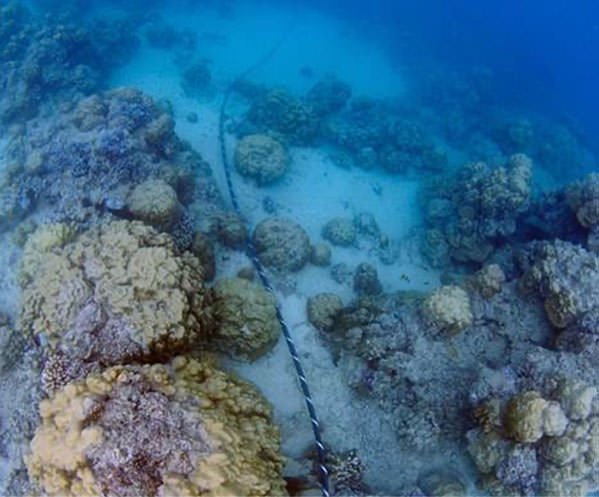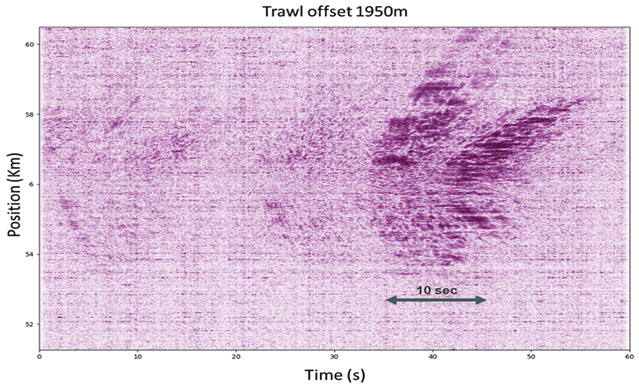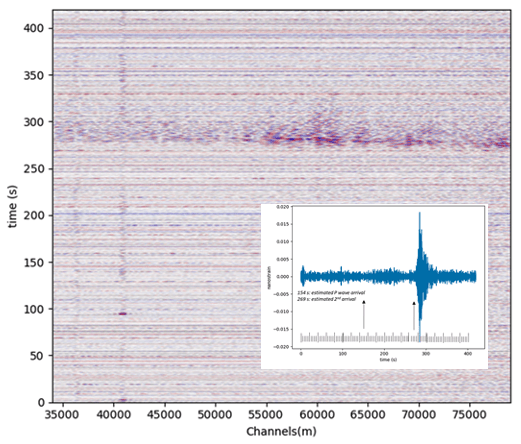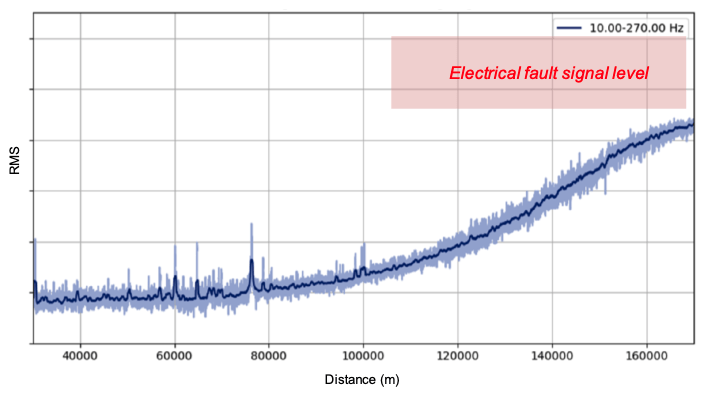
Subsea Cable DAS Applications
Monitoring of integrity threats to subsea cables and associated infrastructure
• Trawl activities
• Anchoring
• Dredging activities
• Vortex induced vibration
Earthquake detection
Measurment of oceanographic conditions
Reservoir monitoring
• Ocean currents
• Seabed rock slides etc
Monitoring of marine mammal activities
Localization of electrical failures
• Partial discharge effects
Applications for subsea telecom and power cables
Dark fibre in subsea telecom cables can be used to protect the cables against third party activities such as trawling, anchoring and dredging. Such fibre can also be used for environmental and scientific monitoring such as earthquake and tsunami detection, various oceanographic conditions and mammal monitoring.
On-line DAS monitoring with an optical cable next to an electrical high-power cable might provide an instant localization of partial discharge effects.
The OptoDAS interrogator has an extremely long range (in excess of 150 km with low attenuation fibre) making it very suitable for these seabed measurements. The interrogator has very low frequency capability (detecting signals below 0.01 Hz) and can also be used for temperature rate measurements.

Trawl monitoring
When a trawl hits the sea floor, acoustic waves (propagating along the seabed) will be excited. Such waves will induce strain in an optical cable installed on the seabed. Detectable strain is distributed over several kilometers along the cable (depending on the distance between the trawl and cable).
Data have been recorded from trawl activities in a fishing area in the North Sea at cable positions 55 – 60 km from the shore end. Trawls on the seabed are recorded within 1-2 km distances from the cable.
Real-time processing software provides continuous localization and tracking of trawl activities by using the optical cable as a coherent DAS antenna. The software issues warnings to the telecom operator when trawls are approaching the cable. Vessel identification can be made through the use of AIS data.
Earthquake detection
Dark fibres in subsea telecommunication networks can be applied for global monitoring of seismic activity. Approaches for monitoring seismic events (earthquakes) are under development.
The OptoDAS interrogator has recorded earthquakes with DAS monitoring on subsea cables installed in the North Sea. In a cable trenched at an oil field, an earthquake at Jan Mayen (1700 km away) was recorded. The magnitude of this earthquake was 6.8. Both P and S waves were recorded within 3-5 Hz and 0.02-1 Hz, respectively.
Another earthquake has been recorded with an operational telecom cable. An earthquake (1200 km away) of magnitude 4.5 was recorded along the cable positions 35 – 80 km from the onshore interrogator (cable direction is close to that of the seismic wave). The peak recorded amplitude was about 15 pico-strain.


Localization of electrical failure
Some of the electrical energy released in a partial discharge (PD) transforms to acoustic energy. The generated acoustic emission will depend on surrounding materials of the void discharge. The main acoustic energy is at ultrasonic frequencies, but some energy is also emitted at much lower frequencies (suitable for long-range DAS monitoring).
DAS can be used for on-line monitoring of partial discharge in HVDC cables providing an instant location of the failure position. Although partial discharge effects occur quite seldom, an on-line OptoDAS system enables significantly faster repair and reduced period of lost revenue when a failure occurs.
OptoDAS can monitor power cables in excess of 300 km length (by monitoring from both ends). The figure illustrates background noise level measured over more than 160 km in an optical cable attached to an HVDC subsea cable. The figure also includes estimated DAS signals in case of a partial discharge. These signal levels are based on experimental results.


